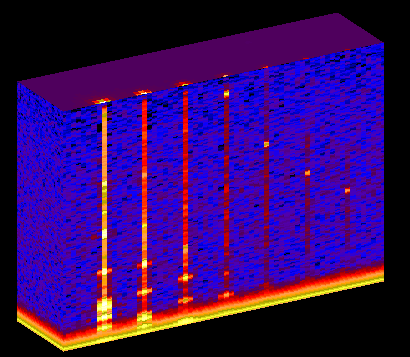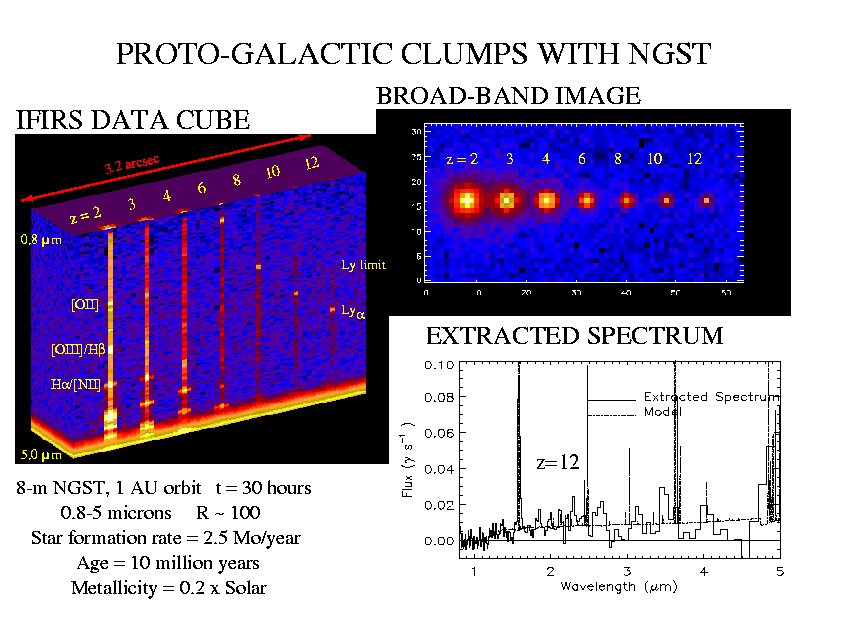


Prominent emission lines of known wavelengths are ideal for establishing
the redshift, while features such as the hydrogen recombination lines can
be used to estimate the star formation rate. In the annotated data cube emission lines familar to optical astronomers, but redshifted to infrared
wavelengths, are detected. The ultraviolet Lyman alpha line at 1216 A can
be seen in the highest redshift objects. The strength of the Lyman alpha
line is very uncertain because it is strongly absorbed by interstellar
dust. But for distant objects, the location of the Lyman break at 912 A
can also be used to determine the redshift. It is very exciting that the
Lyman break is clearly recorded in these spectra because this shows that
IFIRS has the potential to discover the first sites of star formation in
the early universe.
emission lines familar to optical astronomers, but redshifted to infrared
wavelengths, are detected. The ultraviolet Lyman alpha line at 1216 A can
be seen in the highest redshift objects. The strength of the Lyman alpha
line is very uncertain because it is strongly absorbed by interstellar
dust. But for distant objects, the location of the Lyman break at 912 A
can also be used to determine the redshift. It is very exciting that the
Lyman break is clearly recorded in these spectra because this shows that
IFIRS has the potential to discover the first sites of star formation in
the early universe.